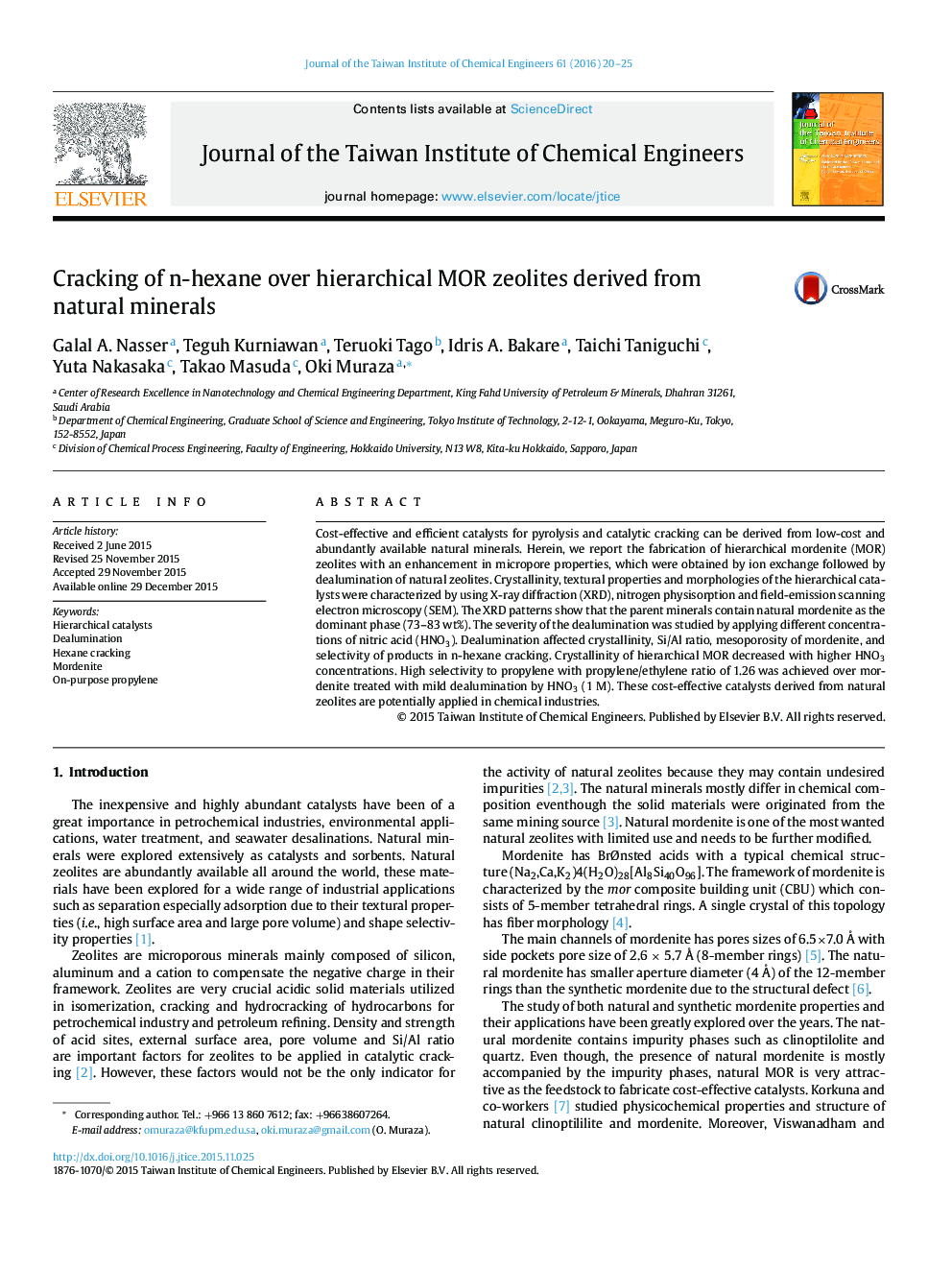| Article ID | Journal | Published Year | Pages | File Type |
|---|---|---|---|---|
| 690338 | Journal of the Taiwan Institute of Chemical Engineers | 2016 | 6 Pages |
•Hierarchical mordenite was produced by alkaline post-treatment of natural zeolite.•Crystalinity of hierarchical MOR decreased with higher severity of dealumination.•Mild dealumination increased the micropore and mesopore volume significantly.•High selectivity to propylene was obtained over hierarchical mordenite.
Cost-effective and efficient catalysts for pyrolysis and catalytic cracking can be derived from low-cost and abundantly available natural minerals. Herein, we report the fabrication of hierarchical mordenite (MOR) zeolites with an enhancement in micropore properties, which were obtained by ion exchange followed by dealumination of natural zeolites. Crystallinity, textural properties and morphologies of the hierarchical catalysts were characterized by using X-ray diffraction (XRD), nitrogen physisorption and field-emission scanning electron microscopy (SEM). The XRD patterns show that the parent minerals contain natural mordenite as the dominant phase (73–83 wt%). The severity of the dealumination was studied by applying different concentrations of nitric acid (HNO3). Dealumination affected crystallinity, Si/Al ratio, mesoporosity of mordenite, and selectivity of products in n-hexane cracking. Crystallinity of hierarchical MOR decreased with higher HNO3 concentrations. High selectivity to propylene with propylene/ethylene ratio of 1.26 was achieved over mordenite treated with mild dealumination by HNO3 (1 M). These cost-effective catalysts derived from natural zeolites are potentially applied in chemical industries.
Graphical abstractPropylene/ethylene (P/E ratio) versus reaction time for raw and dealuminated MOR.Figure optionsDownload full-size imageDownload as PowerPoint slide
